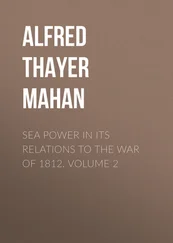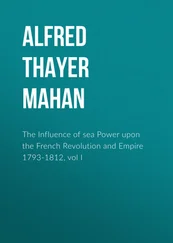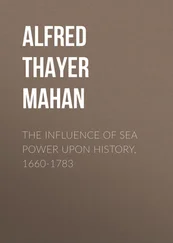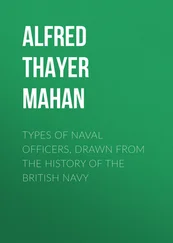Alfred Thayer Mahan - The Life of Nelson, Volume 2
Здесь есть возможность читать онлайн «Alfred Thayer Mahan - The Life of Nelson, Volume 2» — ознакомительный отрывок электронной книги совершенно бесплатно, а после прочтения отрывка купить полную версию. В некоторых случаях можно слушать аудио, скачать через торрент в формате fb2 и присутствует краткое содержание. Жанр: foreign_prose, История, foreign_edu, foreign_antique, на английском языке. Описание произведения, (предисловие) а так же отзывы посетителей доступны на портале библиотеки ЛибКат.
- Название:The Life of Nelson, Volume 2
- Автор:
- Жанр:
- Год:неизвестен
- ISBN:нет данных
- Рейтинг книги:4 / 5. Голосов: 1
-
Избранное:Добавить в избранное
- Отзывы:
-
Ваша оценка:
- 80
- 1
- 2
- 3
- 4
- 5
The Life of Nelson, Volume 2: краткое содержание, описание и аннотация
Предлагаем к чтению аннотацию, описание, краткое содержание или предисловие (зависит от того, что написал сам автор книги «The Life of Nelson, Volume 2»). Если вы не нашли необходимую информацию о книге — напишите в комментариях, мы постараемся отыскать её.
The Life of Nelson, Volume 2 — читать онлайн ознакомительный отрывок
Ниже представлен текст книги, разбитый по страницам. Система сохранения места последней прочитанной страницы, позволяет с удобством читать онлайн бесплатно книгу «The Life of Nelson, Volume 2», без необходимости каждый раз заново искать на чём Вы остановились. Поставьте закладку, и сможете в любой момент перейти на страницу, на которой закончили чтение.
Интервал:
Закладка:
Having done this, however, he adopted measures well calculated to crush the southern flank speedily, and then to accumulate superior numbers on the northern. The British were arranged in a column of attack, and the directions were that the three leading ships should pass along the hostile line, engaging as they went, until the headmost reached the fifth Dane, a blockship inferior to itself, abreast which it was to anchor by the stern, as all the British ships were to do. Numbers two and three were then to pass number one, and anchor successively ahead of her, supporting her there against the other enemy's batteries, while four and five were to anchor astern of her, engaging the two flank blockships, which would have received already the full broadsides of the three leading vessels. Nelson hoped that the two southern Danes, by this concentration of fire upon them, would be speedily silenced; and their immediate antagonists had orders, when that was done, to cut their cables and go north, to reinforce the fight in that quarter. The sooner to attain this end, a frigate and some smaller vessels were told off to take position across the bows of the two blockships, and to keep a raking fire upon them.
The dispositions for the other British vessels were more simple. They were to follow along the outer side of their own engaged ships, each one anchoring as it cleared the headmost ship already in action,—number six ahead of number five, number seven of number six,—so that the twelfth would be abreast the twentieth Dane. One ship-of-the-line was of course thought equivalent to two or three floating batteries, if opposed to them in an interval. By this arrangement, each of the British was covered in its advance, until it reached its prescribed antagonist as nearly fresh as possible, and the order of the British column was reversed from end to end. 31 31 Except numbers 4 and 5, whose stations, as has been said, were abreast the two southernmost Danes.
A division of frigates and fireships, under Captain Riou, was held ready for any special service. The bomb-vessels were to anchor in the King's Channel, but well outside the line of battle, from which position they threw some bombs. Alongside each ship-of-the-line was towed a flat-boat, intended to carry soldiers in an attempt to storm the Trekroner, if circumstances favored; and other boats were sent for that purpose from Parker's division.
These orders were copied, and ready for distribution, by six in the morning. Nelson, who was already up and had breakfasted, signalled at seven for all captains, and by eight these had their instructions. The wind had become so fair that ships anchoring by the stern would lie perfectly well for using their broadsides at once. At this instant indecision appeared among the pilots, who were mostly men of only a little local experience, and that gained in vessels much smaller than those they were now to conduct. Nelson, reverting afterwards to these moments, said: "I experienced in the Sound the misery of having the honour of our Country intrusted to pilots, who have no other thought than to keep the ship clear of danger, and their own silly heads clear of shot. At eight in the morning of the 2d of April, not one pilot would take charge of a ship." There is in these words scarcely fair allowance for the men's ignorance. At length one of the Masters of the fleet, a Mr. Brierley, undertook to lead the column, and the signal to weigh in succession was made. The leading ship got off handsomely, but difficulties soon arose. Nelson's old "Agamemnon" was so anchored that she could not weather the Middle Ground; she consequently did not get into action at all. Two other ships, the "Bellona" and "Russell," seventy-fours, grounded on the east side of the Middle Ground, where they remained fast. Although they could use their guns, and did use them against those southern ships which Nelson particularly wanted crushed, the disadvantages of distance, of position, and of general helplessness, detracted exceedingly from their usefulness. The valid British force was thus reduced by one-fourth,—to nine vessels.
Nelson's ship, the "Elephant," was following the "Bellona" and "Russell," and he saw them ground. "His agitation during these moments was extreme," says an eye-witness. "I shall never forget the impression it made on me. It was not, however, the agitation of indecision, but of ardent, animated patriotism panting for glory, which had appeared within his reach, and was vanishing from his grasp." He doubtless well knew the thinly veiled reproaches of rashness, cast by timid counsels upon the daring, which even under these disadvantages was to cover with confusion their prophecies of disaster; but, as on many another day, and in that more famous incident, a few hours later, in this same battle, his tenacious purpose harbored no side-thought of retreat. "Before you receive this," he had written to Lady Hamilton, "all will be over with Denmark,—either your Nelson will be safe, and Sir Hyde Parker a victor, or he, your own Nelson, will be laid low." The signal to advance was kept flying, but new dispositions had to be made to meet the new and adverse conditions. 32 32 The following is the order of the ships in the column of attack, as originally prescribed:— 1. Edgar, 74. 2. Ardent, 64. 3. Glatton, 54. 4. Isis, 50. 5. Agamemnon, 64. 6. Bellona, 74. 7. Elephant, 74. 8. Ganges, 74. 9. Monarch, 74. 10. Defiance, 74. 11. Russell, 74. 12. Polyphemus, 64.
The remaining ships were made to close to the rear, as they anchored. The "Elephant" had been originally assigned as antagonist to the biggest Danish ship, the "Sjaelland," seventy-four; but, the "Bellona" having grounded, she now dropped into the latter's berth immediately ahead of the "Glatton;" and Nelson hailed the "Ganges," as she was passing, to place herself as close as possible ahead of the "Elephant." This movement was imitated by the "Monarch," which thus got the "Elephant's" position abreast the "Sjaelland." Here, according to Danish accounts, the contest stood for some time, until the "Defiance," Graves's flagship, arriving, anchored ahead of the "Monarch," completing the line of nine British ships. Captain Riou with his light division engaged the Trekroner, and the Danish blockship next south of it, which was by him terribly battered. From this moment, and for some time, to use subsequent words of Nelson, "Here was no manoeuvring: it was downright fighting."
Meanwhile Parker's division, which had weighed as agreed, was some four miles off, beating up against Nelson's fair wind. It had not yet come into action, and the anxious chief, ever doubtful of the result of a step into which he had been persuaded, contrary, not, perhaps, to his will, but certainly to his bent, watched the indecisive progress of the strife with a mind unoccupied by any fighting of his own. Two things were evident: that Nelson had met with some mishaps, and that the Danish resistance was more prolonged and sturdier than he had argued in the Council that it would be. Parker began to talk about making the signal to leave off action, and the matter was discussed between himself, his fleet-captain, and Otway, the captain of the ship. The latter opposed the idea strongly, and at last, as a stay, obtained the admiral's authority to go on board the "Elephant" and learn how things were. He shoved off accordingly, but before he reached Nelson the signal was made.
Vice Admiral, Sir Hyde Parker
Nelson at the moment was walking the quarter-deck of the "Elephant," which was anchored on the bow of the Danish flagship "Dannebroge," engaging her and some floating batteries ahead of her. At this time, Stewart says, "Few, if any, of the enemy's heavy ships and praams had ceased to fire;" and, after mentioning various disappointments that had befallen the smaller British vessels, besides the failure of three heavy ships to reach their stations, he continues: "The contest, in general, although from the relaxed state of the enemy's fire, it might not have given much room for apprehension as to the result, had certainly not declared itself in favour of either side. Nelson was sometimes much animated, and at others heroically fine in his observations. A shot through the mainmast knocked a few splinters about us. He observed to me, with a smile, 'It is warm work, and this day may be the last to any of us at a moment;' and then, stopping short at the gangway, he used an expression never to be erased from my memory, and said with emotion, 'but mark you, I would not be elsewhere for thousands.'
Читать дальшеИнтервал:
Закладка:
Похожие книги на «The Life of Nelson, Volume 2»
Представляем Вашему вниманию похожие книги на «The Life of Nelson, Volume 2» списком для выбора. Мы отобрали схожую по названию и смыслу литературу в надежде предоставить читателям больше вариантов отыскать новые, интересные, ещё непрочитанные произведения.
Обсуждение, отзывы о книге «The Life of Nelson, Volume 2» и просто собственные мнения читателей. Оставьте ваши комментарии, напишите, что Вы думаете о произведении, его смысле или главных героях. Укажите что конкретно понравилось, а что нет, и почему Вы так считаете.












